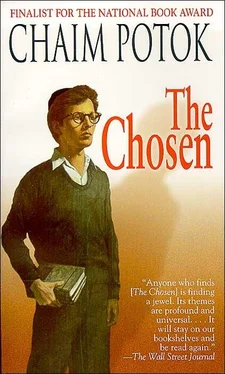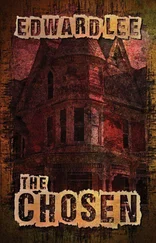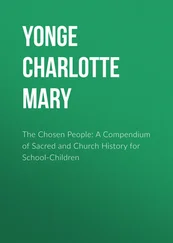By the time my father had been in the hospital three weeks, the evenings had become almost an automatic routine. The dread of his possible death was gone. It was now a matter of waiting out the silence until he came home. And I waited out the silence by studying.
I began especially to study Talmud. In the past, I had done all my Talmud studying on Shabbat and during the morning preparation periods. Now I began to study Talmud in the evenings as well. I tried to finish my college work as quickly as I could, then I would turn to the passage of Talmud we were studying with Rav Gershenson. I would study it carefully, memorize it, find the various commentaries – those which were not printed in the Talmud itself could always be found in my father's library and memorize them. I tried to anticipate Rav Gershenson's tangled questions. And then I began to do something I had never done before with the Talmud I studied in school. After I was done memorizing the text and the commentaries, I began to go over the text again critically. I checked the Talmudic cross references for parallel texts and memorized whatever differences I found. I took the huge volumes of the Palestinian Talmud from my father's library – the text we studied in school was the Babylonian Talmud – and checked its parallel discussions just to see how it differed from the discussions in the Babylonian Talmud. I worked carefully and methodically, using everything my father had taught me and a lot of things I now was able to teach myself. I was able to do all of this in real depth because of Rav Gershenson's slow-paced method of teaching. And by doing all of this, I was able to anticipate most of Rav Gershenson's questions. I also became more and more certain of when he would call on me again.
He had never called on me since that day in October. And it was now the middle of February. As a result of my night sessions with Talmud, I had pulled ahead of the class by at least five or six days and was tangled in one of the most complicated discussions I had ever encountered. The complication was caused not only by the Talmud text itself, which seemed filled with gaps, but by the commentaries that struggled to explain it. The text consisted of nine lines. One of the commentaries on the text ran to two and a half pages, another ran to four pages. Neither was very clear. A third commentary, however, explained the text in six lines. The explanation was terse, clipped, and simple. The only thing wrong with it was that it seemed not to be based on the text it was explaining. A later commentary tried to reconcile the three commentaries by the method of pilpul, the result being a happy one for someone who enjoyed pilpul but quite strained as far as I was concerned. It looked to be a hopeless situation.
As we came closer and closer to this text, I became more and more convinced that Rav Gershenson was going to call on me to read and explain it. I didn't quite know why I was convinced of that; I just knew that I was.
I began painfully to unravel the puzzle. I did it in two ways.
First, in the traditional way, by memorizing the text and the commentaries, and then inventing all sorts of questions that Rav Gershenson might ask me. I would ride the trolley, walk the streets, or lie in bed – and ask myself questions. Second, in the way my father had taught me, by attempting to find or reconstruct the correct text, the text the commentator who had offered the simple explanation must have had before him. The first way was relatively simple; it was a matter of brute memorization. The second way was tortuous. I searched endlessly through all the cross-references and all the parallel passages in the Palestinian Talmud. When I was done, I had four different versions of the text on my hands. I now had to reconstruct the text upon which the simple commentary had been based. I did it by working backward, using the commentary as a base, then asking myself what passage among the four versions the commentator could have had before him as he wrote the commentary. It was painstaking work, but I finally thought I had it down right. It had taken hours and hours of precious time, but I was satisfied I had the correct text, the only text that really made sense. I had done it this way only to satisfy myself. When Rav Gershenson called On me, I would, of course, only use the first method of explanation. When my father returned from the hospital, I would show him what I had done with the second method. I felt very proud of my accomplishment.
Three days later, we came to that passage in our Talmud class, and for the second time that year Rav Gershenson called out my name and asked me to read and explain.
The class was deathly silent. Some of my friends had told me earlier that they dreaded being called on for that passage; they hadn't been able to make any sense at all out of it and the commentaries were impossible. I was a little frightened, too, but very eager to show off what I had learned. When I heard my name called, I felt myself tingle with a mixture of fear and excitement, as if a tiny electric shock had gone through my body. Most of the students had been waiting apprehensively to hear who would be asked to read. They had sat staring down at their texts, afraid to meet Rav Gershenson's eyes. Now they were all looking at me, even Danny was looking at me, and from one of the students at my right came a barely audible sigh of relief. I bent over my Talmud, put the index finger of my right hand below the first word of the passage, and began to read.
Every Talmudic passage is composed of what, for the sake of convenience, might best be called thought units. Each thought unit is a separate stage of the total discussion that makes up the passage. It might consist of a terse statement of law, or a question on the statement, an answer to the question, a brief or lengthy commentary on a Biblical verse, and so on. The Talmud contains no punctuation marks, and it is not always a simple matter to determine where a thought unit begins and ends; occasionally, a passage will have a tight, organic flow to it which makes breaking it up into thought units difficult and somewhat arbitrary. In most instances, however, the thought units are clearly discernible, and the decision on how to break up a passage into such units is a matter of common sense and a feel for the rhythm of the argument. The need to break up a passage into its thought units is simple enough. One has to decide when to stop reading and start explaining, as well as when to appeal to the commentaries for further explanations.
I had broken up the passage into its thought units as I had studied it, so I knew precisely at what points I would stop reading and begin my explanations. I read aloud a thought unit that consisted of a citation from the Mishnah – the Mishnah is the written text of rabbinic oral law; in form and content it is for the most part terse and clipped, a vast collection of laws upon which are based almost all the· rabbinic discussions which, together with the Mishnah, compose the Talmud. When I came to the end of the Mishnaic thought unit, I stopped, and reviewed it briefly, together with the commentaries of Rashi and Tosafists. I tried to be as clear as I could, and acted as if I myself were teaching the class rather than merely acting as a springboard for Rav Gershenson's comments. I finished the explanation of the Mishnaic text and read the next thought unit, which consisted of another Mishnah found in a different tractate from the one we were now studying. This second Mishnah flatly contradicted the first. I explained the Mishnah carefully, showed why there was a contradiction, then read from the commentaries of Rashi and the Tosafists, both of which are printed on the same page as the Talmud text. I expected to be stopped at any moment by Rav Gershenson, but nothing happened. I continued reading and explaining, my eyes fixed on the text as I read and looking at Rav Gershenson as I explained. He let me continue without interruption. By the time I was four lines into the passage, the discussion had become so involved that I had already begun to appeal to one of the medieval commentaries that were not printed on the same page as the text but were rather placed separately at the end of the tractate. I kept a finger of my right hand on the appropriate place in the text, flipped the Talmud to where the commentary had been printed, and read from it. I then indicated that other commentaries had offered different explanations, and I cited them by heart because they were not found in the Talmud edition the class used. Having said that, I returned to the passage and continued to read. When I raised my eyes to explain the thought unit I had just read, I saw that Rav Gershenson had sat down – the first time since I had come into the class that he was sitting during a shiur. He was holding his head in the palms of his hands, the elbows on the open Talmud in front of him, and listening intently. As I continued with my explanation of the thought unit I had just read, I glanced at my wrist-watch and discovered to my amazement that I had been talking for almost an hour and a half without interruption. I had to utilize all the commentaries this time and was able to finish explaining the thought unit a moment before the three o'clock bell sounded. Rav Gershenson said nothing. He just sat there and dismissed the class with a wave of his hand.
Читать дальше












